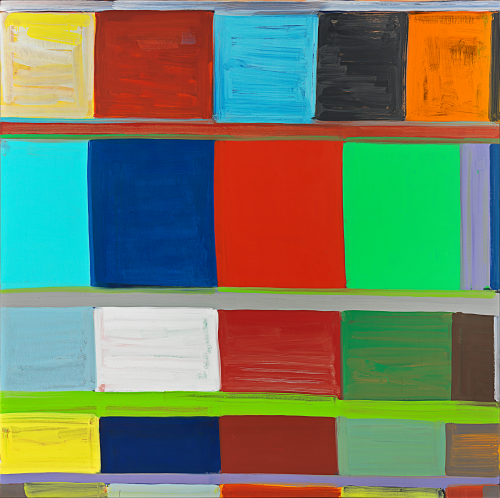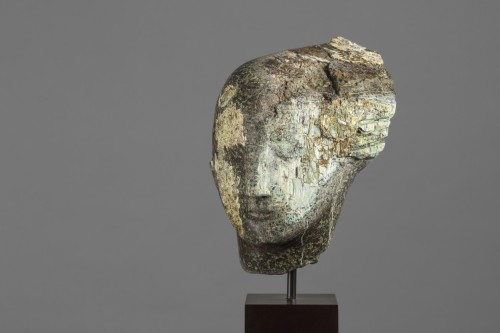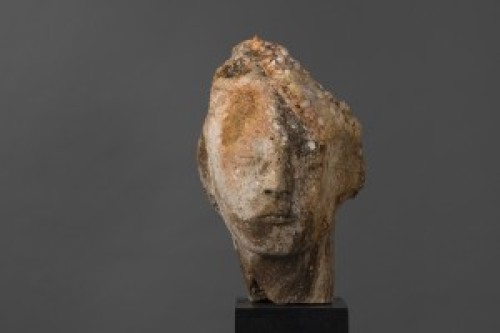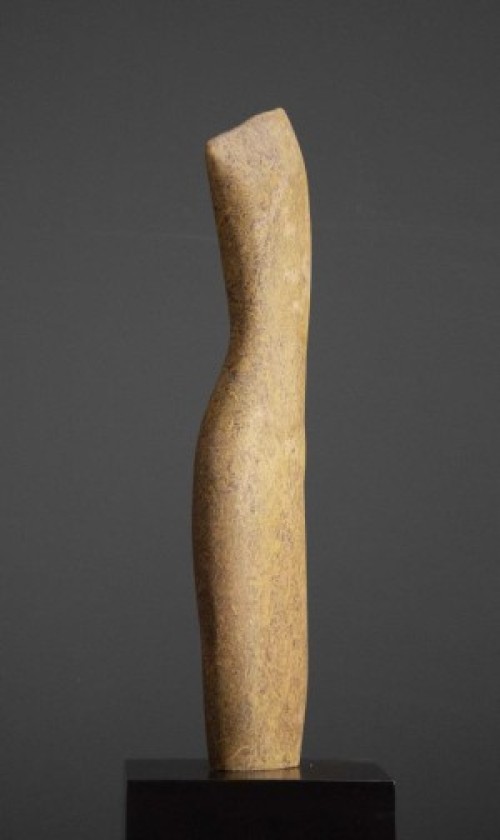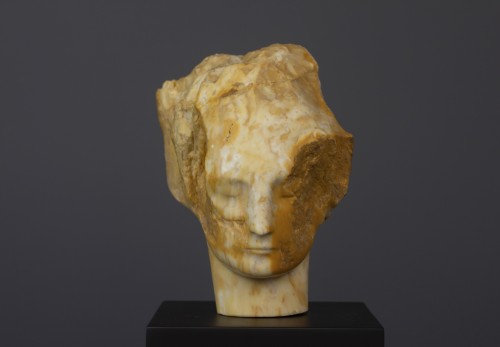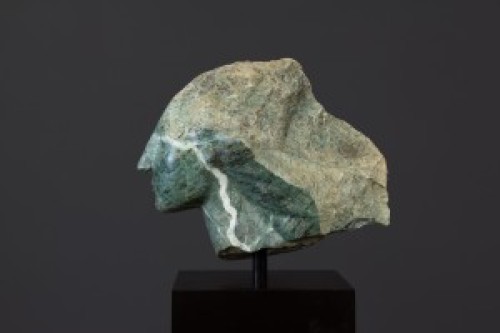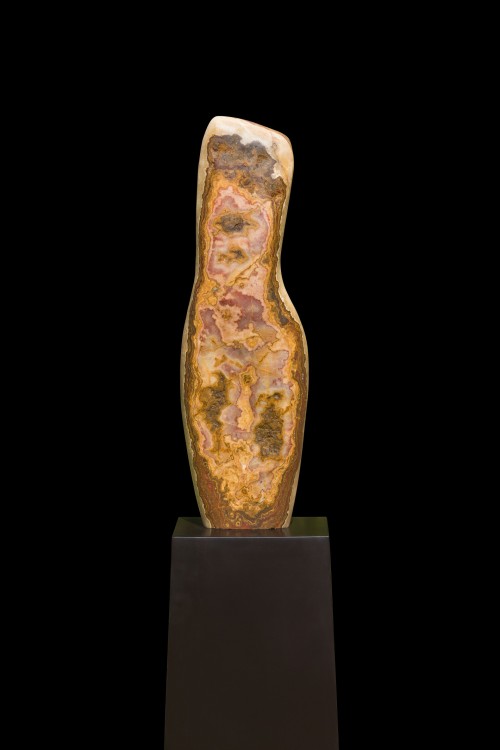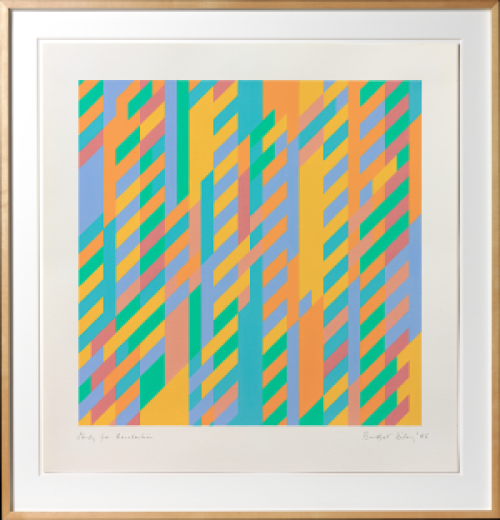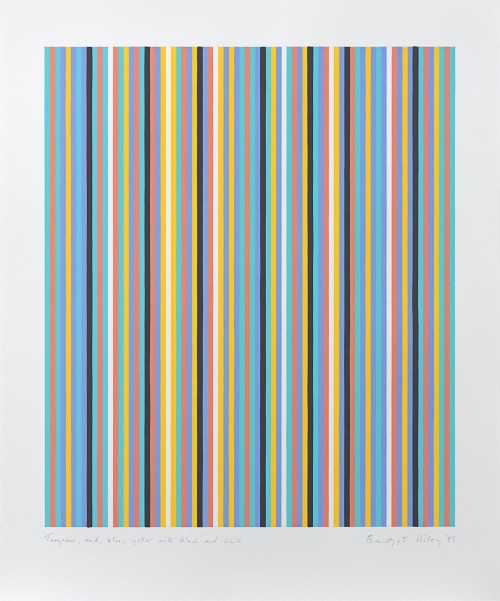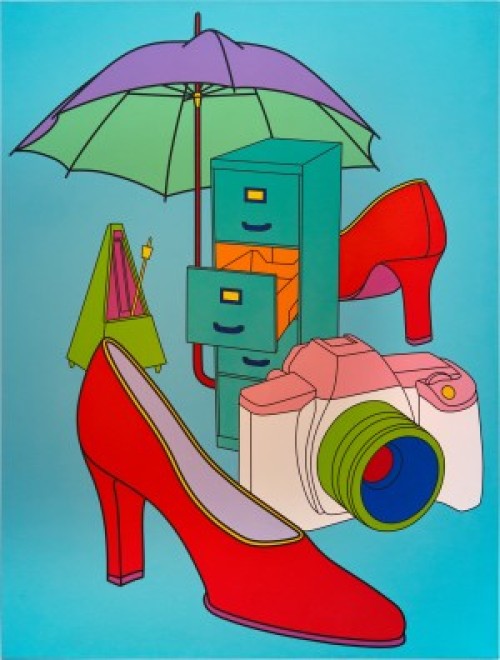STANLEY WHITNEY
Born Philadelphia 1946
Ref: CD 108
Agean
Signed, dated and inscribed on the reverse:
2009 / Stanley / Whitney / "Agean"
Oil on linen: 72 x 72 in / 182.9 x 182.9 cm
Unframed
Provenance:
Galerie Hordenhake, Berlin;
private collection, acquired from the above
Exhibited:
New York, Team Gallery, Stanley Whitney, January-February 2010
New York, American Academy of Arts and Letters, Invitational Exhibition of Visual Arts, 11th March-11th April 2010
New York, Art Omi, Stanley Whitney: Six Paintings, January-February 2012
‘My paintings are about trying to help people survive, giving them an energy that can make them stronger…I’m involved with what it is to be a human being. Because if you live with them, they bring out a lot of stuff.’[1]
An effervescent, rhythmic grid of joyous hues traverse this magnificent, immersive abstract canvas. Stanley Whitney’s Agean, 2009, was first exhibited in New York at a solo show with Team Gallery, before being shown at the American Academy of Arts and Letters in 2010, where the artist won an Academy Award in Art. The American artist was recently the subject of his first career retrospective, which opened at Buffalo AKG Art Museum, then toured to the Walker Art Center, Minneapolis before arriving at the Institute of Contemporary Art, Boston. It’s curator, Cathleen Chaffee, writes in the exhibition catalogue, that Whitney is best known today for his ‘square format, richly coloured, gridded abstract canvases that have, as first glance, changed little since he began making them in 2002. Each of these mature paintings – usually in a 60-, 72-, or 96-inch format – contains four horizontal rows of both askant and ordered coloured squares and rectangles painted in varying degrees of opacity. The organic grids proceed from a relatively compact top horizontal band, to a taller second and sometimes third band that stretch out across the canvas and open the central space as if on an intake of breath, and then a final exhale – a denser band or bands at the bottom that seem compressed by the weight of the sections above. The bands of coloured blocks do not rest upon each other directly but are chromatically and architecturally braced by horizontal lines, more solid than those he had introduced by 1990. These, Whitney sometimes draws across the canvas in a single brushstroke that can appear to sit proud of the blocks or recede behind them. Drips and large, brushy gestures abound, as does overpainting. He focussed in on the square format for his canvases while thinking about Agnes Martin’s organic approach to the grid and seeking a neutral “non-shape” that would constrain his focus. In these works, Whitney has turned his energy to how, not what, he would paint, freed to focus on color associations and relationships; to create movement and rhythm within each work; and to extend the duration of a viewer’s experience with a painting. He has described his desire to make “sit down paintings” that reward repeated viewing: “I really try to paint something that people can live with, that they can spend a lot of time looking at.”’[2]
Andrianna Campbell suggests Whitney’s discourse with twentieth century geometric abstraction began when the artist saw Piet Mondrian’s Broadway Boogie Woogie (1942-43, Museum of Modern Art, New York) in 1968, seeing in the painting: ‘the ability of line to undermine the plane, leaving behind not a rigorous set of rules but instead a musical rhythm. Broadway Boogie Woogie, entrenched as it is in its limited palette of yellow, red and blue, still retains something of the spirit of jazz that inspired Mondrian in his final years in New York.’[3]
It’s possible that the title Agean refers to Philip Guston’s work of the same name. Whitney met Guston in 1968 at the Summer Six art program at Skidmore College, Saratoga Springs, where he was one of two students Guston declared to be painters. At the time Whitney was working towards abstraction and Guston was working back to figuration. Philip Guston’s print Agean (1980) is listed by Chaffee as an example of sources of inspiration and references to them in images of Whitney’s studio.[4]
[1] Stanley Whitney Interviewed by Gregoire Lubineau, 2018 cited in Stanley Whitney: How High the Moon, exh. cat., Buffalo AKG Art Museum & DelMonico Books, New York 2024, p.231.
[2] Cathleen Chaffee, ‘Stanley Whitney Invention and Variation’, cited in Stanley Whitney: How High the Moon, op.cit., p.27.
[3] Andrianna Campbell, ‘The Primacy of Colour’, in Stanley Whitney, In the Colour, exh cat., Lisson Gallery, London 2019, p.5.
[4] Cathleen Chaffee, ‘Stanley Whitney Invention and Variation’, op. cit., p.32.

